
|   |

|   |
|
25th Guru Kelucharan Mohapatra Award Festival - Lalitha Venkat e-mail: lalvenkat@yahoo.com Photos courtesy: Srjan September 17, 2019 The annual Guru Kelucharan Mohapatra Award Festival organized by Srjan is a much awaited event known for the impeccable arrangements and distinguished lineup of artistes in music and dance presented to the discerning Bhubaneswar audience. Curated and directed by Guru Ratikant Mohapatra, this year's festival is special, it being the 25th edition and hence stretched to 7 days from Sept 5 to 11, instead of the usual 5 day bonanza. 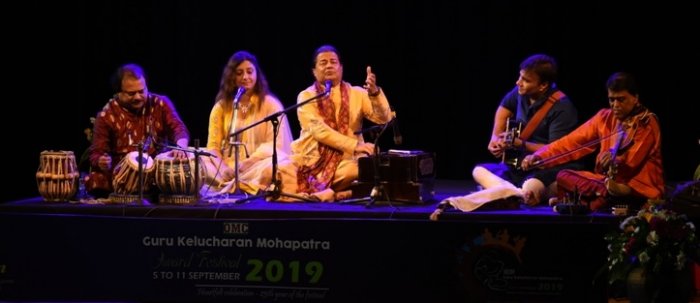 Anup Jalota and group  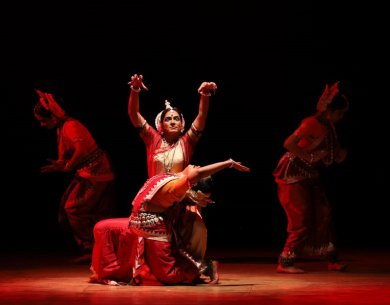 Meera Das and disciples The festival got off to a devotional start with a bhajan recital, each rendition based on a classical raga, by Anup Jalota and co-musicians Koyel Tripathy on the vocals, Rashid Khan on violin, Pradeep Ghosh on tabla, and Himanshu Tiwari on guitar. Aisi lagi lagan set to raag Kiravani, Achutham Keshavam, Jag mein sundar hain do naam set to raag Gurjari Todi, Shyam teri bansi, Raam naam ki loot hai and ending with Rang de chunariya were some of the popular bhajans that enthralled the audience. Meera Das (disciple of gurus Kelucharan Mohapatra and Gangadhar Pradhan) and her well trained disciples of Gunjan Dance Academy, Cuttack, presented a scintillating pure rhythm number titled Taala Roopa or 'Moods of Rhythm' with rhythm composition by mardala maestro Pt Dhaneswar Swain. Using traditional percussion instruments of Odisha, the piece celebrated the concept of romance through rhythmic patterns. Interestingly choreographed by Meera Das, the movements blended beautifully with the rhythms as Meera entered in a brief solo followed by her dancers who carried the rest of the item through with their impeccable dance formations using all the typical Odissi stances and footwork with interesting entries and exits. The second item Dashavatar, an original choreography of Kelubabu, was beautifully adapted by Meera Das into a group presentation, while keeping the original composition intact. Meera and her dancers (Sasmita, Priyanka, Puspa, Bidya, Sweekruti, Munmun and Bhagyashree) depicted the ten incarnations of Lord Vishnu through interesting visual tableaus. 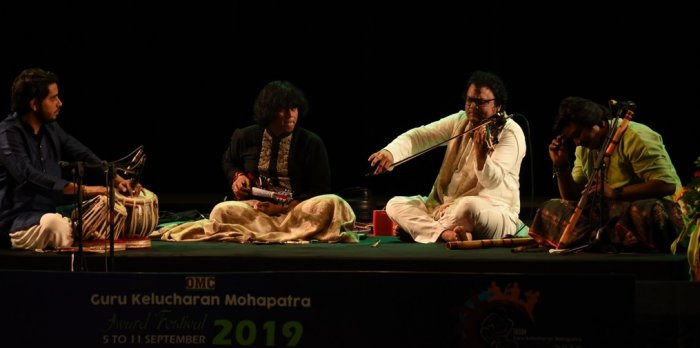 Prashant Sonagra, U Rajesh, Deepak Pandit, Paras Nath Usually, the music program would wind up the evening, but this year, every evening opened with a music ensemble. Day two commenced with a classical music fusion presentation by violinist Deepak Pandit, U Rajesh on mandolin, flautist Paras Nath, and Prashant Sonagra on the tabla. They began with a special tribute to Guru Kelucharan Mohapatra followed by numbers in various classical ragas. With each musician getting chance to display his virtuosity through the recital, the highlight was the final piece featuring 14 different ragas, captivating the audience with the skill and creativity combined with occasional displays of virtuosity, making for a pleasant musical experience. The Odissi group presentation Suryashtakam by 9 dancers of Suravi was led by Pitambar Biswal (a disciple of Guru Durga Charan Ranbir). The hymn to Lord Surya invoked blessings of good health, abundance and longevity. With fluid movements and through appealing visuals, the dancers clad in yellow costumes with red borders, invoked the Sun God to help lead a harmonious life and absolve mankind from suffering. The dancers portrayed various facets of the Sun God and the Surya Pranam through dramatic formations pleasing to the eye. Set to music composition of Ramhari Das and rhythm composition of Niranjan Patra, the original dance choreography by Guru Durga Charan Ranbir was adapted to a group composition by Pitambar Biswal. 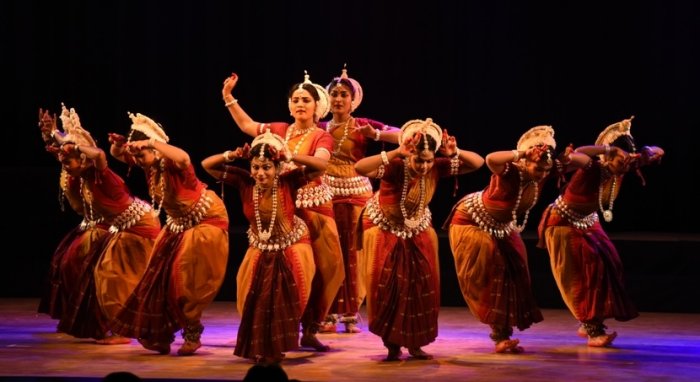 Suravi   Orissa Dance Academy The concluding presentation for the evening was Ahimsa: an Ode to the Father of the Nation by the dancers of Orissa Dance Academy. Aruna Mohanty, senior disciple of Guru Gangadhar Pradhan, is known for tackling varied themes through Odissi dance and this presentation was no exception. With lot of imaginative weaving together of important events in the life of Gandhiji, aided by appropriate visuals on the screen in the background, his ideas and philosophy of life were showcased along with the main historic events like his life in South Africa, salt satyagraha, boycotting British goods and using charka, resisting the British, leading the Quit India movement, and his final moment ending with Vaishnava jana tho. Scripted by Kedar Mishra, and set to the music composition of Ramhari Das, the dance choreography was by Aruna Mohanty. Interspersed with brief English narrations, the events smoothly blended into a cohesive whole, helped by minimalist props and a large dance force. The dancer who played Gandhi's role was a striking figure on stage as he led marches, coming down the steps from one end followed by his supporters, walking across the front and up the steps at the other end of the stage! Despite it being a complex narrative, Ahimsa was a delightful presentation, edited well for the evening's requirement for a shorter piece. The evening was embellished with lighting by Debiprasad Mishra. 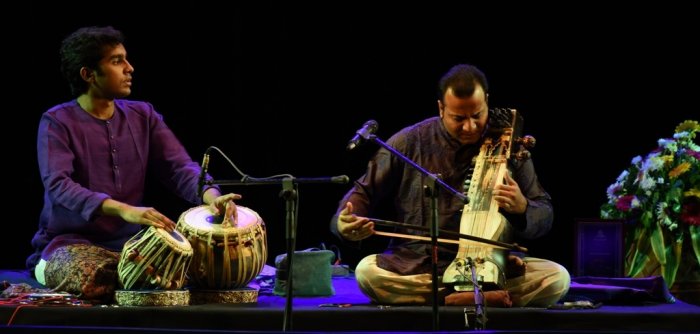 Ishaan Ghosh, Sabir Khan On day three, rasikas were treated to a brilliant sarangi recital by Sabir Khan accompanied by young Ishaan Ghosh on the tabla. Sabir Khan explored the nuances of raag Vachaspati with melodious improvisations, while Ishaan impressed with his versatile rhythmic patterns, both artistes complementing each other beautifully. The happiness in their playing communicated with the audience in a pleasant way, making for a memorable evening. Naina more tharas gaye re balma in raag Mishra Shivaranjini was followed by a tribute that had been composed by Sabir Khan's father for his late mother, and Sabir Khan who had dedicted that soulful melody to his own mother who had passed on a couple of years back, now played it in tribute to Kelubabu. It was a poignant moment for all. Niharika Mohanty, senior disciple of Guru Kelucharan Mohapatra, and founder-director of Guru Shradha, California, was the only solo Odissi dancer of the festival. She presented the pure dance item Behag Pallavi and an Odia abhinaya, Braja ku choro, about mother Yashoda cajoling baby Krishna to sleep. Both were choreographed by Guru Kelucharan Mohapatra. Niharika displayed poise, technical expertise and prowess in subtle abhinaya, but needed to relax a little bit more. 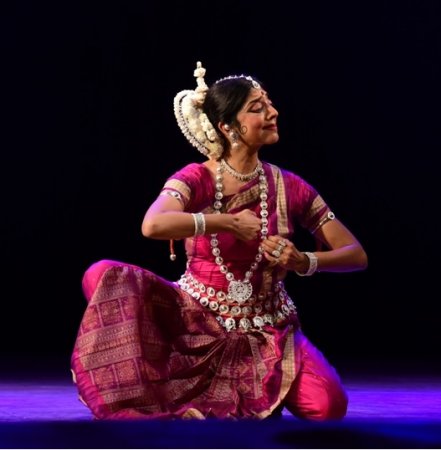 Niharika Mohanty 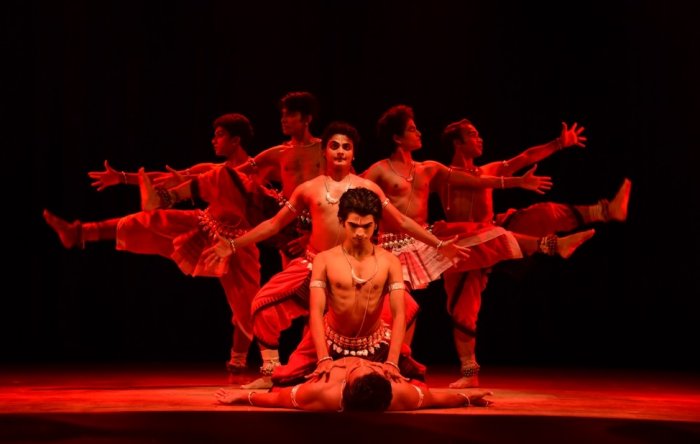 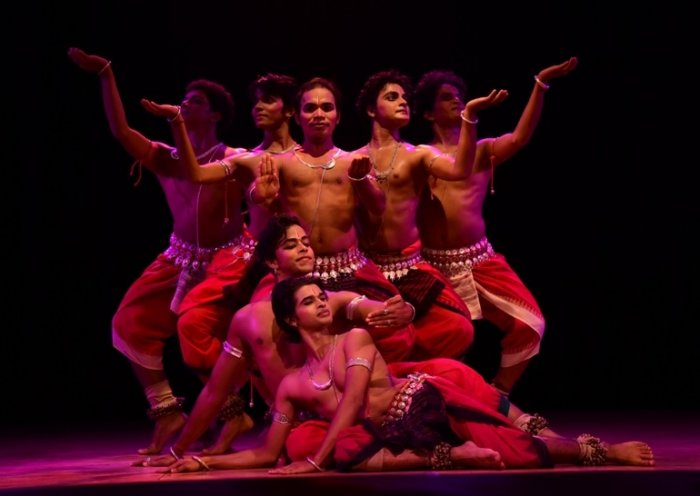 Rudrakshya ensemble In 2000, Guru Bichitrananda Swain set up the Rudrakshya Foundation to develop and promote new and innovative works in Odissi, while creating a platform for young male dancers to showcase their talent. The Rudrakshya ensemble stormed Rabindra Mandap with their vitality and energetic brilliance, with never a dull moment through their presentation of Jaha Krishna Saha Kali beautifully choreographed by Bichitrananda Swain. The production delved into the connection between Krishna (an avatar of Vishnu), and Kali (an avatar of Shakti), exploring the many similarities and contrasts. While Krishna is the compassionate one, Kali is fierce. The dance opens with the devotee in a meditative trance with the universal sound OM in the background, followed by the two bija mantras - Kleem for Krishna and Kreem for Kali. Krishna and Kali descend upon Earth to eliminate evil and restore peace. The devotee visualizes Krishna as Pitambara, surrounded by white cows and looking calm and loving, living in Vrindavan; and Kali as Digambari, surrounded by jackals making furious howling noise, living on the premises of a cremation ground. Krishna dances in the river Yamuna surrounded by gopikas, while Kali dances in a sea of blood. Krishna, the one with lotus-shaped eyes and a charming disposition, is devoted to Radha; and Kali, holding a skull and sword in her left hand, symbolising fearlessness, is dear to Lord Shiva. Set to the music composition of Ramhari Das and rhythm composition of Dhaneswar Swain, the dancers Jagyan, Dushasan, Bichitra, Santosh, Samir, Sanjeev and Rasmi switched between seamlessly portraying the attributes of Krishna and Kali, dazzling with their footwork, energy and stage presence. The first performance of day four was the Hindustani vocal recital of Indrani Mukherjee, an accomplished exponent of the Benaras Gharana. Performing in Bhubaneswar for the first time, she was accompanied on the tabla by Apurba Mukherjee, on harmonium by Gourab Chatterjee and on tanpura by Sachidananda Sahoo. She presented a khayal in raag Kedar, composed in Vilambit ek taal, Madhyam teen taal followed by a Tarana. The Vilambit and Tarana have been composed by Shri Bhaduri, and the medium tempo by Pt. Ramashreya Jha. The melodious piece celebrated the monsoon season. A Kajri in raag Pilu, Kehenva Mano Oh Radha Rani, highlighted her musical sensibilities, concluding with a Bhajan in raag Hemant. The rasikas basked in the soothing atmosphere created by the harmonious Hindustani music. 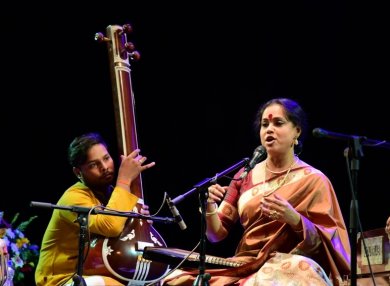 Sachidananda Sahoo, Indrani Mukherjee 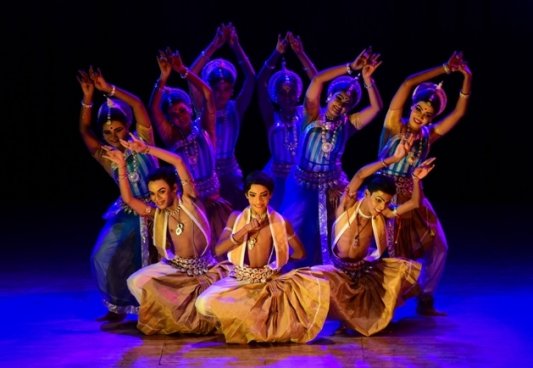 Soor Mandir 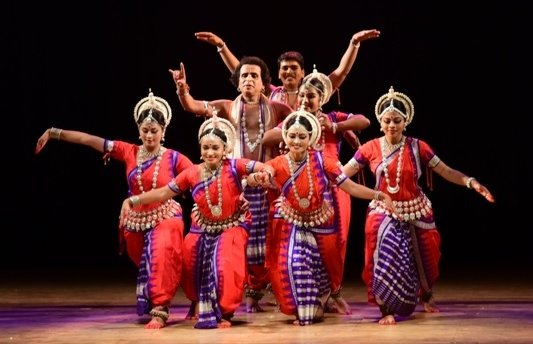 Tridhara Soor Mandir from Cuttack led by Jyotsna Rani Sahoo presented Rasanuraga, set to music composition of Agnimitra Behera and rhythm composition of Dhaneswar Swain. With concept, script and dialogue by Dr. Srinibas Ghatuary, this dance portrayed the connection between rain and love and explored the various connotations between both. Rainy days make for a romantic yearning, of reliving happy or sad memories, of the joy of union and the pangs of separation. It creates a thousand anxious moments like the letter that returns unread. All nature rejoices at the arrival of the first rains, the fragrance of the soil, the dance of the peacock and the new life around. The anxious beloved yearns for the return of her beloved from distant lands. Set to Ragamalika and Talamalika, the dancers effectively portrayed the rains and resulting moods culminating in Srinibas Ghatuary himself appearing as the romantic hero to Jyotsna Rani Sahoo who finds happiness after a bout of nostalgia. The final performance of the evening was by Guru Gajendra Panda (torch-bearer of the Guru Debaprasad Das gharana) and dancers of Tridhara who presented Mangalacharan, Kiravani Pallavi and Ram Bhajan. Titled Lakshmi Nrusingha Dhyana, the Mangalacharan began with an invocation to Lord Gajanana, a prayer to Lakshmi Nrusingha (half man half lion incarnation of Vishnu). The verses have been adapted from Prahalad Natak, the folk theatre of Ganjam district of Odisha. Featuring the hallmark Sabda Swara Pata, a key feature of the Guru Debaprasad Das gharana, Mangalacharan was set to music by Dr. Gopal Chandra Panda, rhythm composition of Banamali Moharana and the dance choreography of Gajendra Panda. The Kiravani Pallavi was composed by Laxmikant Palit with rhythm by Dhaneswar Swain. The concluding Ram Bhajan was drawn from Nagara Kirtana tradition of South Odisha, with music by Dr. Gopal Chandra Panda. The Bhajan also propounded the narratives of Daskathia, a popular folk form of Ganjam. The group displayed neat footwork and sustained energy but the male dancer could cut down on his constant smile. 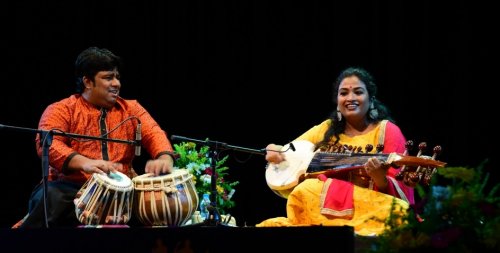 Sandip Ghosh, Debasmita Bhattacharya 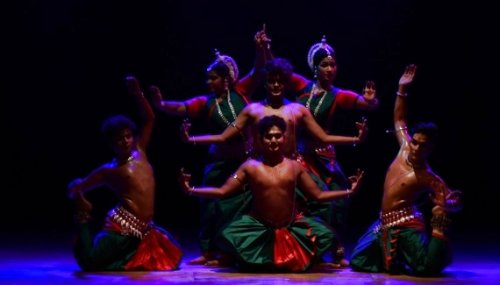 Nupur Dance Academy The sarod recital by Debasmita Bhattacharya, ably accompanied by Sandip Ghosh on tabla gave a delightful start to evening five. They presented an evening of raag Durga, a seasonal raag based on Sharad Ritu, beginning with a short alaap, Vilambit teen taal in sixteen beats, moving on to ek taal, and concluding with a composition in Dhrut. It was interwoven with a beautiful bandish celebrating the oncoming of Durga Puja, Jaya Durge Ma. Presenting pieces composed by the legendary sarod exponent Pt Buddhadev Dasgupta, Debasmita Bhattacharya explored a variety of musical nuances, displaying her creative expression. Nupur Dance Academy, under the mentorship of Guru Niranjan Rout (following the Debaprasad Das gharana), presented Khamaj Pallavi in triputa taal, a pure dance presentation. The energetic Shiva Stotram celebrated the cosmic dance of Lord Shiva, the Tandava, praising the lord and seeking salvation from him through the power of dance. Choreographed by Niranjan Rout, both pieces were set to the music composition of K. Ramarao Patra and rhythm composition of Dhaneswar Swain. The well trained dancers of Nupur impressed with their neat and coordinated movements. The finale of the evening was 'Akshara -A Dalliance with the Odia Alphabet' by Dr. Ileana Citaristi's group Art Vision. Akshara captures dancing with the Odia alphabet in a mood of gaiety, both as dalliance and as homage to this ancient language. Beginning with the rituals of commencement of writing in any Odia village by drawing three circles on the dry mud with lime sticks, these initial shapes and shadows of roundness were shown to denote the genesis of the Odia alphabet. A highlight was the special sand animation by Sudarshan Pattnaik. The projection saw the visual of the whole drawing of an Odia village, the three circles taking shape of Brahma, Vishnu and Maheshwara, ending with Odiya alphabets written across the screen to rapturous applause by the rasikas. The dancers portrayed as children of a village learning to read and write through simple shapes pulled off the concept admirably. Choreographed by Ileana Citaristi, this innovative theme had script and concept by Devdas Chhotray, set to the melodious musical composition of Laxmikant Palit. 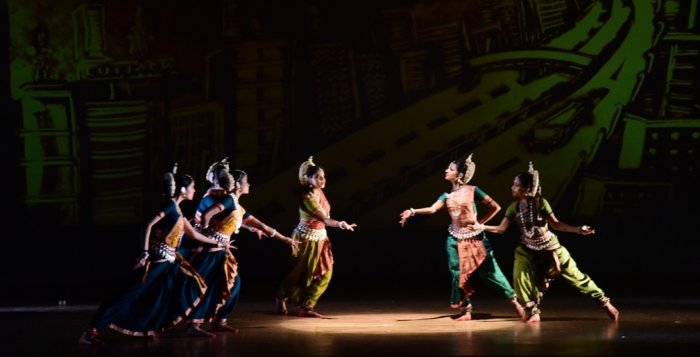 Art Vision  Bijay Kumar Jena and group The penultimate evening commenced with a mellifluous Odissi vocal recital by celebrated vocalist Bijay Kumar Jena, accompanied by stellar musicians like Satchidananda Das on mardala, Srinibas Satpathy on flute, Balakrushna Jena on harmonium, Sitakanta Jena on manjira. Bijay Kumar Jena's recital highlighted the nuances and various facets unique to Odissi music. He began with a Prabandh in raag Behag and jati taal, Prana dhana prana rakha dharuchi to paniki composed by eminent Odia poet Banamali, followed by another Prabandh Barada Bidhure Ana in raag Marwa and ektaali, composed by poet Benudhar. The group presented a Janana, He Narayana written by Abhirama Paramahansa set to raag Vajrakanti and rupak taal in six beats, concluding with a composition by Kavi Upendra Bhanja in raag Bhairavi and ektaali. Every musical piece was received rapturously by the rasikas. Clad in red and black costume, the dancers of Nrutyashala led by Ashok Kumar Ghosal presented the dramatic Mun, the Immortal Devil, depicting well known mythological stories from three yugas before moving on to the present. Hiranyaksha was killed by Narasimha in the Satya Yuga, Ravana was defeated by Sri Rama in the Treta Yuga, Kamsa was crushed by Krishna in the Dwapara Yuga, and in the Kali Yuga, Mun, existing as a manifestation of the three aforementioned evils is shown to be trounced only by Om. In today's world, each individual has a sense of ego and self-grandeur, and only the almighty Om can destroy it. In a rather exaggerated version of dance theatre, there were a lot of tantrums effectively thrown on stage by the main male characters portrayed with energy and verve by a portly Ashok Kumar Ghosal. The presentation saw some imaginative choreographic touches like carrying of a corpse and burning it at the funeral pyre. The final section showed the dancers wearing face masks in this faceless world. Scripted by Nabakishore Mishra and set to the music composition of Himanshu Sekhar Swain, rhythm composition of Dhaneswar Swain and Ajay Kumar Choudhury, the concept and dance choreography was by Ashok Kumar Ghosal. With energetic stage presence and apt expressions, the dancers brought alive the narratives. 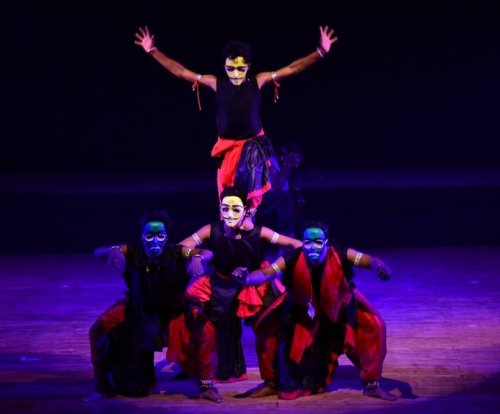 Nrutyashala 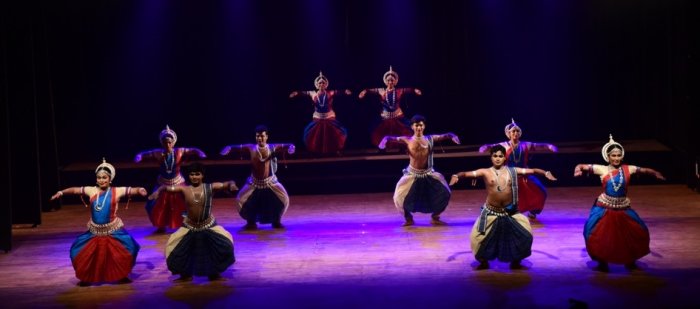 Nrutyayan ensemble The evening concluded with Jagannath Gopinath choreographed by Guru Durga Charan Ranbir (one of the most celebrated proponents of Guru Debaprasad Das gharana) and presented by his Nrutyayan ensemble, where a parallel is drawn between the earlier form of Lord Krishna in Dwapara Yuga, and the rituals of Lord Jagannath at Puri. This composition has its literary base in multiple ancient texts including the Skanda Purana, Bhagavata by Atibadi Jagannath Das, and the poetry of Goura Charan Adhikara and Banamali Das. Set to Ragamalika and Talamalika, the script is by Kedar Mishra, and rhythm composition by Dhaneswar Swain. The audience greatly appreciated the theme and the way the anecdotes were presented with crisp footwork and imaginative movement patterns. 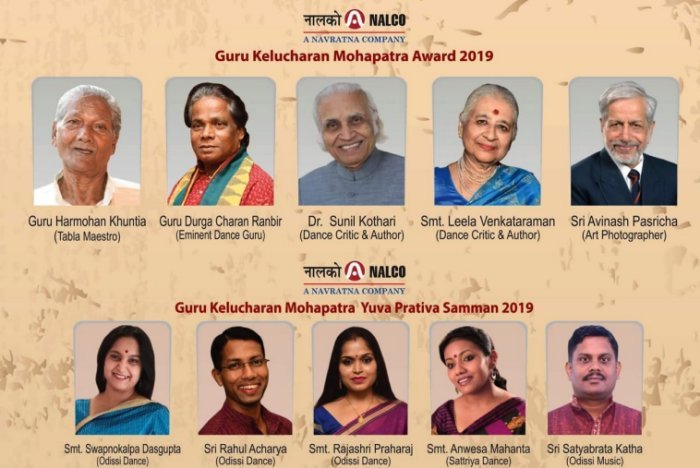 Awardees The final day of the 25th edition of the Guru Kelucharan Mohapatra Award Festival saw the coveted awards being presented. The pouring rains by no means kept the rasikas from gracing the grand occasion. The 'Nalco Guru Kelucharan Mohapatra Award 2019' was presented to tabla maestro Guru Harmohan Khuntia for his contribution to the field of nusic, to Odissi Guru Durga Charan Ranbir for his invaluable work in the field of dance, to eminent dance critics and authors Dr. Sunil Kothari and Leela Venkataraman for their lifetime achievements and contribution to the performing arts, and to renowned photographer Avinash Pasricha for his pioneering work in the field of photography. The award carries a purse of Rupees one lakh and a citation. Each awardee gave a brief heartfelt speech of acceptance. The 'Nalco Guru Kelucharan Mohapatra Yuva Prativa Samman' was given to five talented performing artistes under the age of 40 in the field of classical dance and Odissi music. This year's awardees are Swapnokalpa Dasgupta, Rahul Acharya and Rajashri Praharaj for Odissi dance, Anwesa Mahanta for Sattriya dance, and Satyabrata Katha for Odissi music. Each artiste received a cash prize of Rs. 25,000 and a citation. Beaming with happiness, the acceptance speech by the awardees was greatly appreciated. The awards were given away by Ashok Kumar Tripathy, Former Member, Board of Revenue, and Manoranjan Panigrahi, Principal Secretary, Odia Language, Literature and Culture. Doing the honors on stage, bringing the shawls and mementoes to be distributed, were fashionably clad male Odissi dancers (in traditional designer clothes) from Kolkata who had come specially to help in the function. The female dancers monitored the hall! 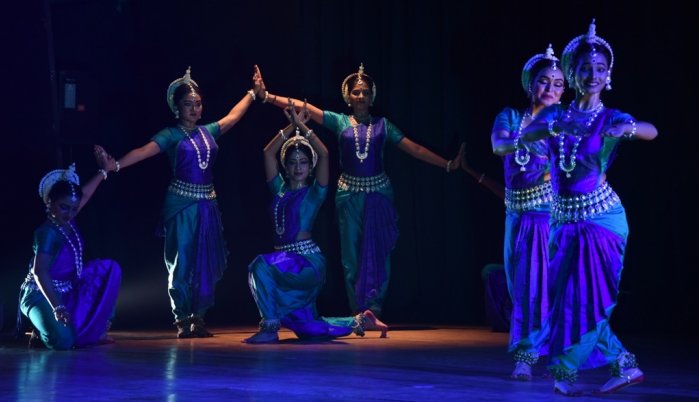 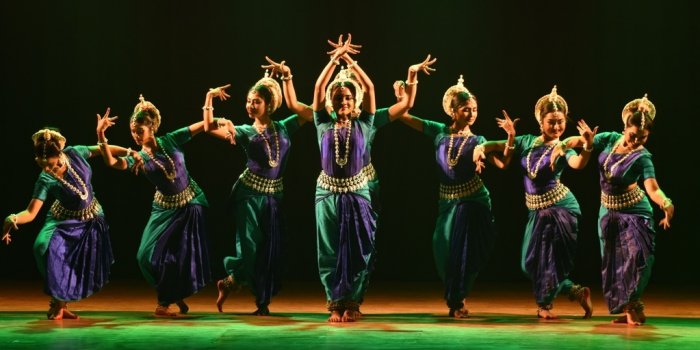 Srjan ensemble After the award presentation, the grand finale had the Srjan dance ensemble present 'Namami Gange' about the descent of mother Ganga from the locks of Lord Shiva, choreographed by Guru Ratikant Mohapatra, scripted by Pt Nityananda Mishra, and set to Laxmikant Palit's music. The synopsis of the production was narrated at the start in the deep voice of Aditya Mahapatra. Beginning with an invocation to Ganga, the story of the river starts with the Ashwamedha Yagna of King Sagara, moves on to cover its journey from the Himalayan peaks, through the hills of Gomukh, travelling across the Gangetic plains, and finally into the Bay of Bengal. In the past, mother Ganga provided enormous benefits to all who inhabited its banks, but ungrateful man has repaid the river's generosity with senseless acts of destruction and pollution. To create environmental awareness, the presentation is a call to the people to stop the pollution and help restore mother Ganga to her former glory and purity. The flow of the river was choreographed in many appealing movement patterns. In Ratikant Mohapatra's signature neo-classical style of Odissi, the dancers clad in beautiful blue/green costumes, used their bodies as props, seamlessly transitioning through the attractive formations using some novel and some traditional movements. The Srjan dancers Rajashri Praharaj, Ritu Sengupta, Pragna Parimita Das, Aishwariya Singhdev, Sipra Swain, Preetisha Mohapatra, Reebdhita Barua, and Maya Krishnamurty displayed skill and synchronisation throughout. The appeal of the presentation was enhanced by the brilliant light design of Debiprasad Mishra. Usually, other dance forms and out of town artistes are featured in this festival, but this 25th edition focused on the Odissi dance form, and featured leading local dance groups with the exception of solo recital by Niharika Mohanty. The groups generally displayed a high level of proficiency in the dance form and one got to watch presentations on varied interesting themes. In the half hour time allotted to each dance group, all adhered to the time limit admirably, while also managing to display their skills. The recorded music used in all dance presentations was of a high quality, managed skilfully by Anand at the controls. This is the third year that Anand who hails from Singapore, is participating in the Kelucharan Mohapatra Award Festival. Debiprasad Mishra at the lights enhanced the presentations with his expertise. With his suave announcements in Odiya, Dr. Srinibas Ghatuary steered the evenings smoothly. Kudos to Guru Ratikant Mohapatra for successfully presenting, yet again, a flawlessly managed festival to the people of Bhubaneswar. Every year, the Award Festival is ably supported by organisations which have been instrumental in the success of Srjan's many endeavours. Odisha Mining Corporation (OMC) was title sponsor and National Aluminium Company (NALCO) was the award sponsor. Lalitha Venkat is the content editor of www.narthaki.com |